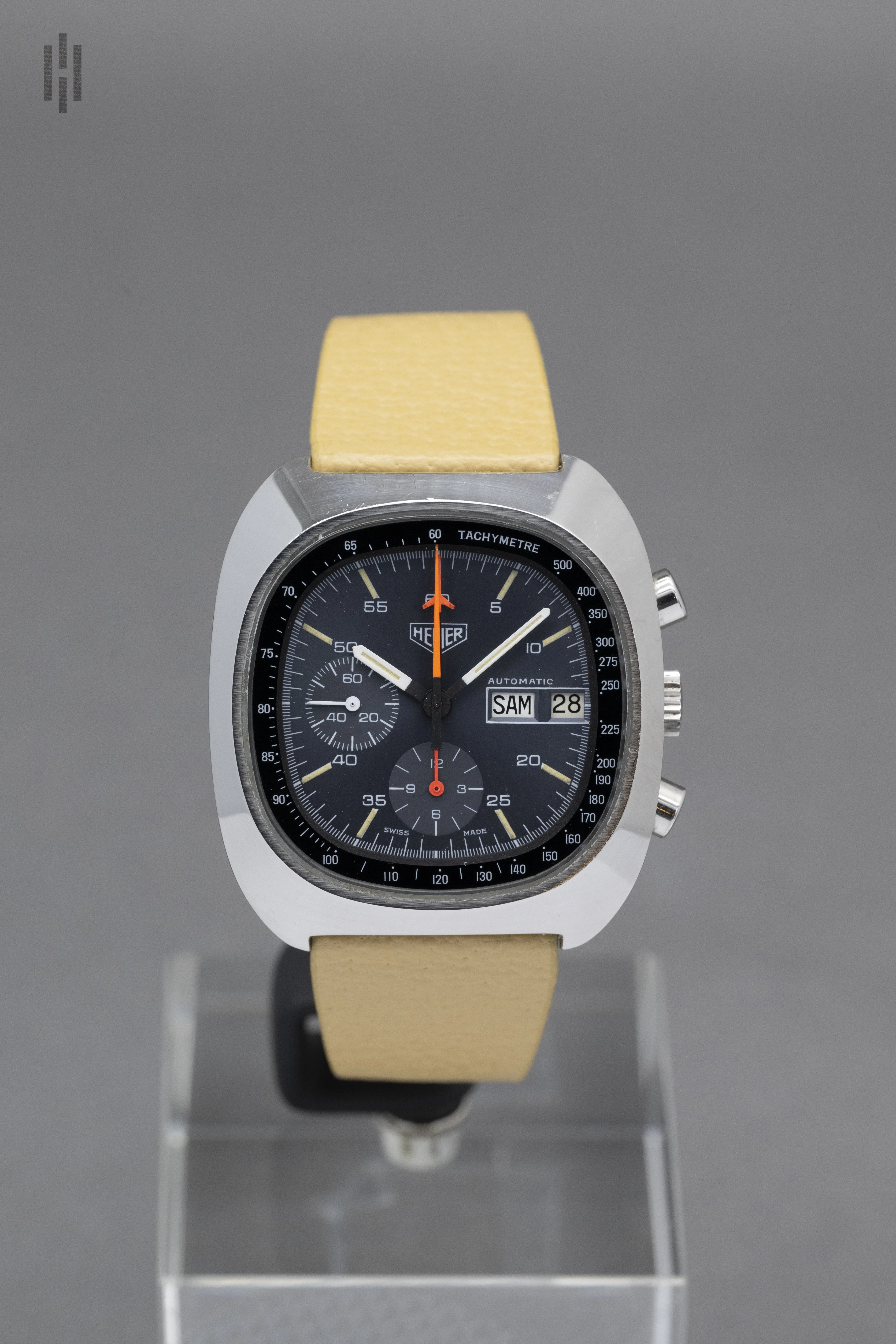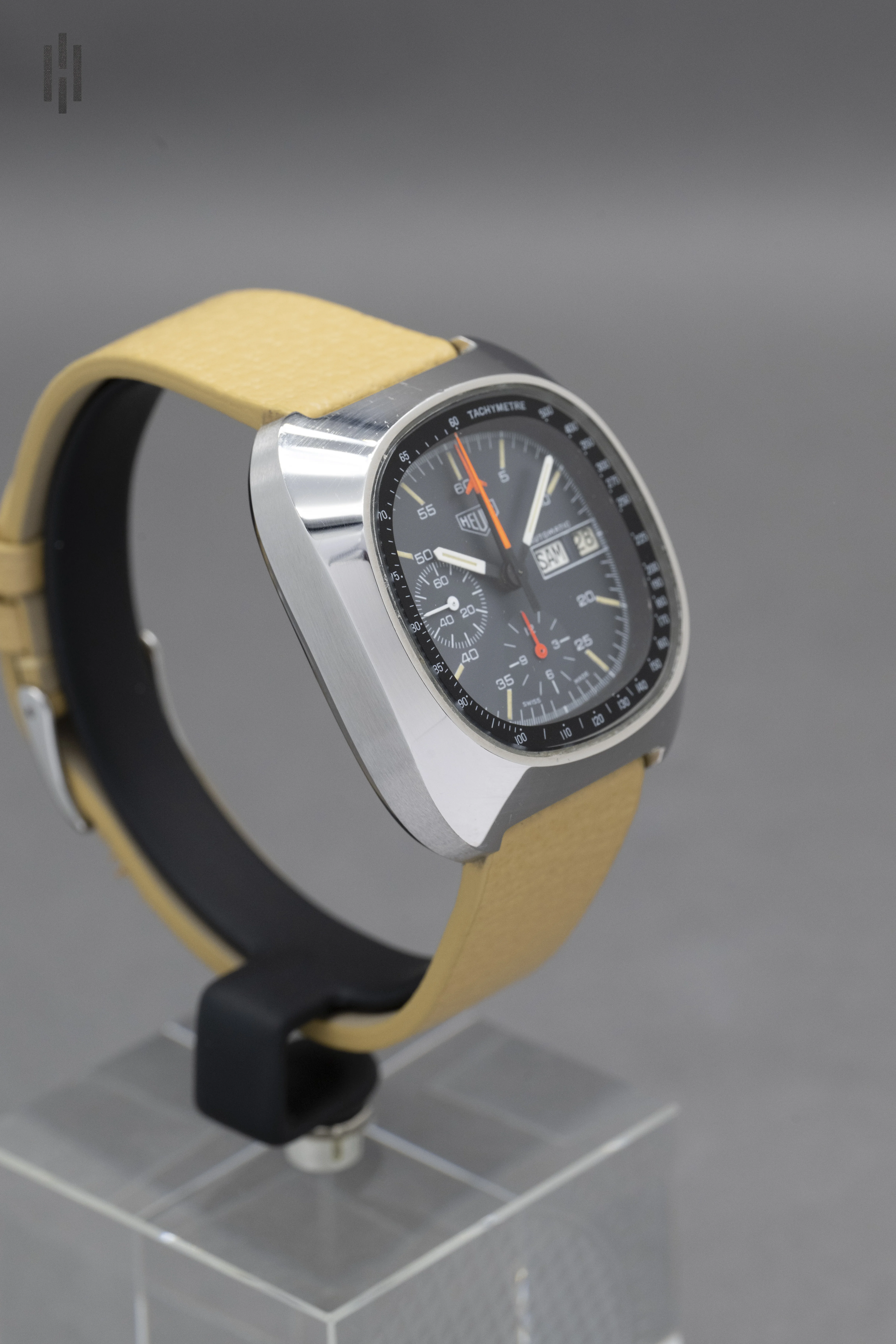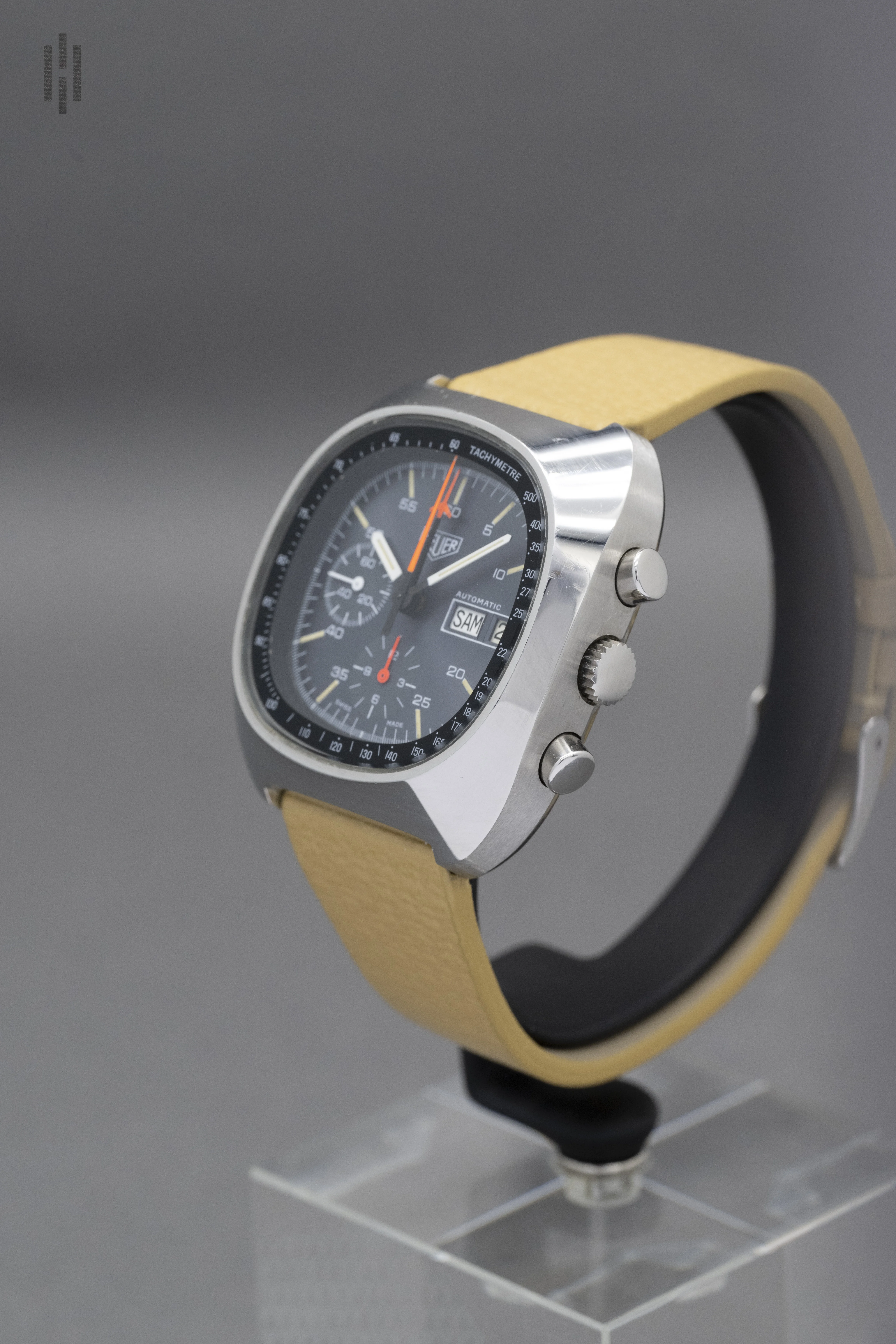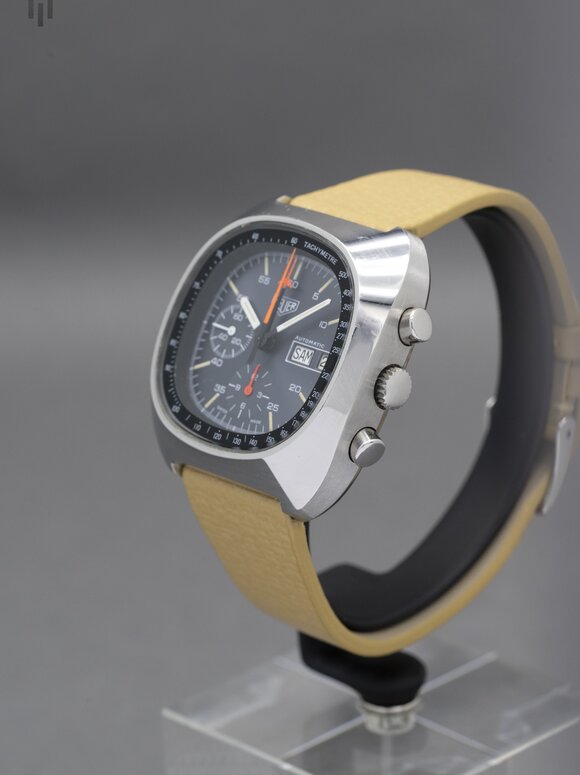 Back to overview
Back to overview Heuer’s original TV-case Silverstone is a true icon of 1970s motorsport timing and a hallmark of the brand’s heritage. Frequently spotted on the wrists of Niki Lauda’s F1 team, it exudes a magnetic charm that captures the spirit of the era. Yet, often overlooked is the model where this bold design found its final evolution: the Silverstone Ref. 510.403, introduced in 1983. Powered by the robust Lemania 5100/5012 movement, this version may not have enjoyed the same spotlight as its predecessor, but it played a vital role in carrying Heuer through the challenging quartz crisis—remaining true to its mechanical roots. Its aesthetic is completely distinct within the Heuer lineup: the case design is unlike anything else the brand produced, and the unique split-hand chronograph layout sets it apart from its contemporaries. Far rarer than the original Silverstone, the 510.403 is a hidden gem for collectors—one that combines innovation, resilience, and unmistakable style.
4'500 CHF

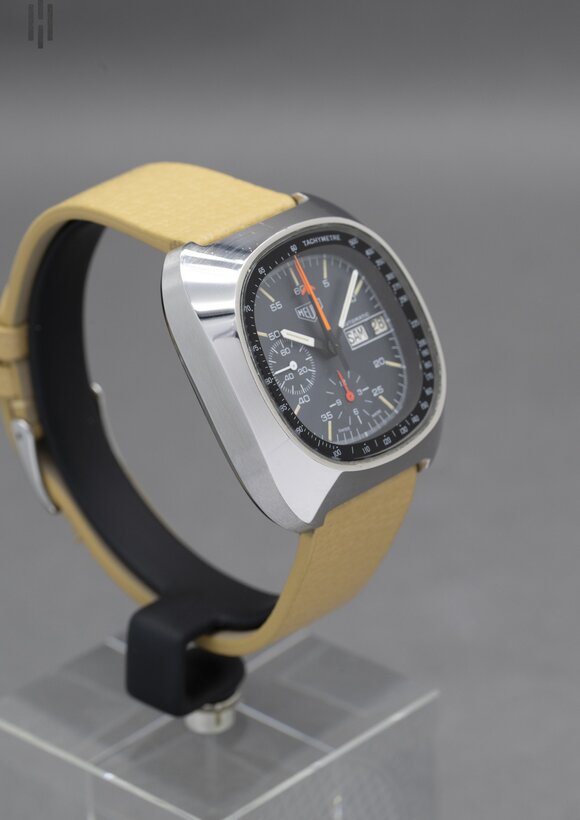

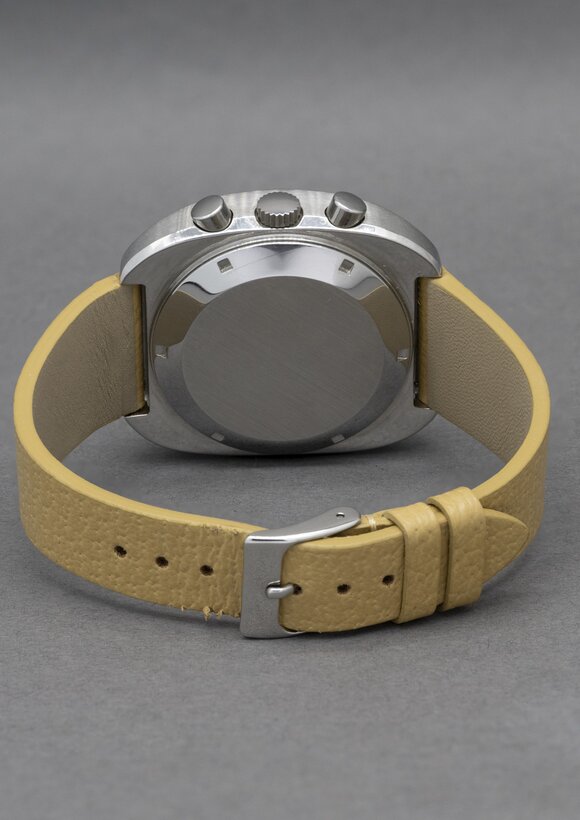
Heuer’s original TV-case Silverstone is a true icon of 1970s motorsport timing and a hallmark of the brand’s heritage. Frequently spotted on the wrists of Niki Lauda’s F1 team, it exudes a magnetic charm that captures the spirit of the era. Yet, often overlooked is the model where this bold design found its final evolution: the Silverstone Ref. 510.403, introduced in 1983. Powered by the robust Lemania 5100/5012 movement, this version may not have enjoyed the same spotlight as its predecessor, but it played a vital role in carrying Heuer through the challenging quartz crisis—remaining true to its mechanical roots. Its aesthetic is completely distinct within the Heuer lineup: the case design is unlike anything else the brand produced, and the unique split-hand chronograph layout sets it apart from its contemporaries. Far rarer than the original Silverstone, the 510.403 is a hidden gem for collectors—one that combines innovation, resilience, and unmistakable style.
4'500 CHF
